Welcome to our comprehensive guide to mastering padel tennis! Whether you’re a beginner looking to learn the ropes or a seasoned player aiming to fine-tune your skills, this guide is your ultimate resource. Padel tennis is a dynamic sport that combines elements of tennis and squash, offering a unique playing experience that is both challenging and enjoyable.
Within this guide, we will provide you with valuable tips and tricks to elevate your padel tennis game. From understanding the essential rules to implementing strategic insights, we will cover all aspects of the sport to help you improve your performance on the court. Additionally, our gear guide will assist you in choosing the right equipment, ensuring you have the tools necessary to excel in your padel tennis journey.
Let’s dive in and unlock the secrets to becoming a master in the exciting world of padel tennis!
Key Takeaways:
- Padel tennis combines elements of tennis and squash, making it a unique and engaging sport.
- Understanding the rules of padel tennis is crucial for successful gameplay.
- Implementing strategic insights can greatly improve your chances of winning in padel tennis.
- Choosing the right padel equipment is essential for optimal performance on the court.
- Being part of the padel community offers opportunities for growth, connection, and enjoyment of the sport.
Discovering Padel Tennis: A Sport on the Rise
Padel tennis has gained immense popularity worldwide due to its engaging gameplay and accessibility to players of all ages. Combining elements of tennis and squash, this sport offers a unique and exciting experience on the court. In this section, we will explore the origins of padel tennis and its rapid global surge. Additionally, we will discuss how padel tennis has become a social sport that brings people of all ages together. Finally, we will highlight the key differences between padel tennis and other popular racket sports like tennis and squash.
The Origins and Global Surge of Padel Tennis
Padel tennis originated in Mexico in the late 1960s and quickly spread to other Spanish-speaking countries. The sport gained traction in Spain during the 1970s and has since expanded globally, capturing the attention of players and enthusiasts worldwide. Padel tennis has seen a significant surge in popularity due to its exciting gameplay, easy accessibility for beginners, and the strong sense of community it fosters among players.
A Social Sport for All Ages
One of the remarkable aspects of padel tennis is its ability to bring people of all ages together. Unlike some sports that may be exclusive to certain age groups, padel tennis welcomes players of all ages and skill levels. Whether you’re a child just starting out or a senior looking for a fun way to stay active, padel tennis offers a social and inclusive environment where everyone can enjoy the game.
Key Differences Between Padel Tennis and Other Racket Sports
While padel tennis shares similarities with other racket sports like tennis and squash, there are some key differences that set it apart. Unlike tennis, padel tennis is played on a smaller court surrounded by walls, which adds an interesting element to the game in terms of strategy and shot placement. Additionally, padel tennis utilizes solid rackets and a specific type of ball, which contribute to the unique dynamics and feel of the sport. These differences make padel tennis a distinct and exciting sport for players to explore.
| Padel Tennis | Tennis | Squash |
|---|---|---|
| Played on a smaller court with walls | Played on a larger court with no walls | Played on a small enclosed court |
| Uses solid rackets and a specific ball | Uses strung rackets and a specific ball | Uses a smaller racquet and a specific ball |
| Emphasizes strategic shot placement | Emphasizes powerful strokes and accuracy | Emphasizes agility and quick reflexes |
Understanding the Essential Rules of Padel Tennis
To play padel tennis successfully, it’s crucial to understand the rules of the game. In this section, we will delve into the scoring and serving fundamentals, explore how court dynamics impact gameplay, and explain the let rule and rally play.
The Scoring and Serving Fundamentals
In padel tennis, the scoring system is similar to traditional tennis. The game is played in sets, with each set consisting of games. To win a game, a player or team must score four points and have a two-point advantage. The scoring progression is as follows:
- Love-All
- 15-0
- 30-0
- 40-0
- Game
When both players or teams have scored three points each (40-40), it is called deuce. To win the game from deuce, one player or team must then win two consecutive points to secure the advantage and win the game.
As for serving, in padel tennis, the serve must be performed diagonally, similar to squash. The serve must start within the service box and then bounce before being hit. If the serve hits the net but lands within the correct service box, it is considered a let serve and the server gets another chance to serve.
How Court Dynamics Affect Gameplay
Court dynamics play a significant role in padel tennis. The presence of walls surrounding the court creates unique opportunities for shot selection and strategy. Players can use the walls to their advantage by hitting the ball off them to create unexpected angles and unpredictable bounces for their opponents.
The walls also impact the game defensively, as players must be aware of the positions and movements of their opponents. Shots that rebound off the walls can quickly change the direction and trajectory of the ball, making it important to anticipate and react swiftly to maintain control of the rally.
Navigating the Let Rule and Rally Play
In padel tennis, the let rule comes into play when the serve hits the net and lands within the correct service box. Unlike traditional tennis, where a let results in a second serve, in padel tennis, it is typically allowed to play the ball as a normal rally without stopping the point. However, the players can agree to replay the point if they feel that the let had a significant impact on the outcome.
Rally play in padel tennis is fast-paced and requires quick reflexes and strategic shot selection. Players must aim to keep the ball in play, utilizing a combination of groundstrokes and volleys to maintain control and pressure their opponents. By alternating between defensive and offensive shots, players can maintain the flow of the rally and create opportunities to win points.
| Court Dynamics in Padel Tennis | |
|---|---|
| Advantages | Challenges |
| The presence of walls allows for creative shot selection and unexpected angles. | Players must be alert and react swiftly to handle shots rebounding off the walls. |
| Using the walls can disrupt opponents’ positioning and create opportunities to win points. | Misjudging the trajectory of the ball off the walls can result in errors. |
| Allows for defensive strategies by utilizing the walls as a defensive barrier. | Players need to balance offensive and defensive play to maintain control of the rally. |
Strategic Insights for Winning at Padel Tennis
In this section, we will provide strategic insights to help you improve your chances of winning at padel tennis. By implementing these strategies into your gameplay, you can maximize your chances of success in matches and elevate your overall performance.
Tactics: One of the key factors in winning at padel tennis is having a tactical approach to the game. Consider the following strategies:
- Control the court: Focus on positioning yourself in a way that allows you to dominate the court. Anticipate your opponent’s moves and adjust your position accordingly to maintain control.
- Play to your strengths: Identify your strengths as a player and tailor your game plan to emphasize them. Whether it’s your powerful serves or quick reflexes at the net, leveraging your strengths will give you an advantage.
- Mix up your shots: Vary your shot selection to keep your opponent guessing. Use a combination of lobs, drop shots, and powerful drives to create uncertainty and disrupt your opponent’s rhythm.
Shot selection: Making the right shot choices is crucial for success in padel tennis. Consider the following:
- Assess the situation: Evaluate the position of your opponent and the court dynamics before deciding which shot to play. Adapt your shot selection based on the specific circumstances of each point.
- Be aware of your opponent: Pay attention to your opponent’s strengths and weaknesses. Exploit their weaknesses by targeting specific areas of the court or employing shots that put them under pressure.
- Maintain accuracy: Aim for consistency and precision in your shots. By hitting the ball cleanly and accurately, you can reduce unforced errors and increase your chances of winning points.
Game management techniques: Effectively managing the flow of the game can give you a competitive edge. Consider these techniques:
“Padel tennis is as much a mental game as it is physical. Focus on staying composed and mentally resilient throughout the match. Avoid getting frustrated or discouraged, and instead maintain a positive mindset that allows you to make sound decisions and adapt to changing circumstances.”
By incorporating these strategic insights into your padel tennis game, you can enhance your chances of winning matches and reaching your full potential on the court.
Choosing the Right Padel Equipment: A Buyer’s Guide
The right equipment is essential for optimal performance in padel tennis. In this buyer’s guide, we will explore the different types of padel equipment, including rackets and balls, and provide tips for choosing the right gear that suits your playing style. We will also discuss other equipment options, such as protective eyewear and accessories, to enhance your comfort and safety on the court.
When it comes to padel rackets, there are several factors to consider. The weight, balance, and materials used can significantly impact your gameplay. Lighter rackets offer greater maneuverability, while heavier rackets provide more power. Balancing the weight and control is crucial. Additionally, the materials used, such as carbon fiber or fiberglass, can affect the durability and performance of the racket. It’s essential to try different rackets and determine which one feels comfortable and suits your playing style.
“Choosing the right padel racket is like finding the perfect partner on the court—it should complement your strengths and help you overcome your weaknesses.”
Another important factor is the type of padel balls you use. Padel tennis balls are specifically designed for the sport, providing the right amount of bounce and durability. Opt for high-quality balls that are approved by official padel associations to ensure consistency and fair play.
Protective eyewear is crucial for your safety on the court. Padel involves fast-paced gameplay and close proximity to other players, increasing the risk of potential eye injuries. Invest in a pair of protective goggles that offer maximum visibility and impact resistance.
In addition to rackets, balls, and eyewear, there are other accessories that can enhance your padel experience. Grips and overgrips provide a comfortable and secure hold on the racket, allowing for better control and reducing the risk of slippage. Wristbands and headbands can help manage sweat and keep you focused during intense matches.
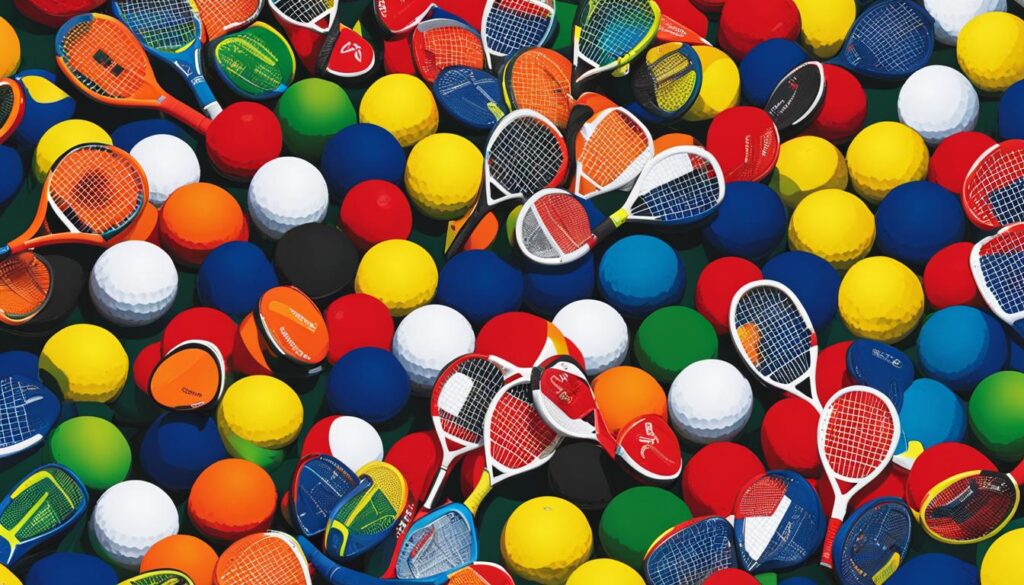
| Equipment | Tips for Choosing |
|---|---|
| Rackets | Consider weight, balance, and materials for optimal performance. |
| Balls | Choose high-quality, approved balls for consistency and fair play. |
| Protective Eyewear | Invest in impact-resistant goggles to ensure safety on the court. |
| Accessories | Select grips, overgrips, wristbands, and headbands for added comfort and performance. |
Padel Techniques That Elevate Your Game
Improving your padel techniques is key to elevating your game and becoming a formidable player on the court. In this section, we will provide you with valuable tips and techniques to enhance your skills and take your padel tennis performance to the next level.
Finesse and Power: Developing a Dominant Serve
A dominant serve is a crucial weapon in your padel tennis arsenal. It sets the tone for the point and puts pressure on your opponent right from the start. To develop a dominant serve, focus on the following strategies:
- Placement: Experiment with different target areas to keep your opponent guessing and off balance.
- Variation: Mix up the speed and spin of your serves to add unpredictability and make it harder for your opponent to return.
- Body Positioning: Maintain a strong and balanced stance throughout your serve, generating power from your legs and core.
By honing your finesse and power in serving, you’ll gain a significant advantage in controlling the game and putting your opponent under pressure.
Mastering the Art of the Wall Rebound
One of the unique aspects of padel tennis is utilizing the walls as part of your gameplay. Mastering the art of the wall rebound opens up new opportunities for shot placement and angles. Here’s how to excel at wall rebounds:
- Angle Awareness: Understand the rebound angles off the walls and use them strategically to surprise your opponent.
- Footwork: Position yourself correctly and quickly adjust your footwork to respond to the wall rebounds.
- Timing: Anticipate the rebound trajectory and time your shots effectively to maintain control and accuracy.
By mastering the wall rebound, you’ll have an edge in creating offensive opportunities and forcing your opponent into compromising positions.
Versatile Shot Selection: Keeping the Opponent Guessing
Shot selection plays a crucial role in padel tennis and can greatly influence the outcome of a point. Keep your opponent guessing and off balance by utilizing a variety of shots:
- Lob: A high, deep shot that allows you to reset the point and regain control.
- Drop Shot: A soft, delicate shot that catches your opponent off guard and requires them to quickly change direction.
- Powerful Drive: A hard-hitting shot that puts pressure on your opponent and forces them to defend.
- Angled Shot: A shot played with precision and accuracy, directing the ball away from your opponent’s comfort zone.
By mixing up your shot selection tactically, you’ll make it harder for your opponent to anticipate your next move, keeping them on their toes.
How to Find and Engage with the Padel Community
The padel community is a vibrant and supportive network of players who share a passion for the sport. Engaging with the community not only allows you to connect with fellow enthusiasts but also provides opportunities for growth and development. In this section, we will guide you on how to find nearby padel courts and clubs, participate in tournaments and social events, and leverage social media to connect with like-minded individuals.
Locating Nearby Padel Courts and Clubs
Finding padel courts and clubs in your area is the first step to immersing yourself in the community. Fortunately, there are several resources and directories available that can help you pinpoint the closest facilities. Online platforms dedicated to padel, such as PadelMatch and PadelClique, provide comprehensive listings of courts and clubs across the country. Additionally, you can reach out to local sports centers, tennis clubs, or gyms to inquire about padel facilities they may offer.
When searching for padel courts and clubs, consider factors such as proximity, facility amenities, and membership options. Visiting different locations and engaging with the staff and players can give you a better sense of the atmosphere and community. Don’t hesitate to ask questions and gather information to find the place that aligns with your preferences and goals in the sport.
Participating in Tournaments and Social Events
Tournaments and social events not only allow you to showcase your skills but also provide an excellent opportunity to connect with other players in a competitive yet friendly environment. Check with your local padel clubs or visit padel tournament websites, such as PadelTournament.com, to stay updated on upcoming events in your area.
Whether you’re a seasoned player or a beginner, there are tournaments available for all skill levels. Participating in these events can help you gauge your progress, gain valuable experience, and meet new people who share your passion for padel tennis. Additionally, attending social events organized by padel clubs, such as barbecues, clinics, or exhibition matches, allows you to socialize, learn from experienced players, and build lasting friendships within the community.
Leveraging Social Media to Connect with Fellow Enthusiasts
Social media platforms are powerful tools for connecting with the padel community and staying updated on the latest news, events, and trends. Join Facebook groups or follow pages dedicated to padel in your locality or region to connect with other players, share experiences, and seek advice.
Instagram is another great platform for engaging with the padel community. Use relevant hashtags such as #padeltennis, #padelcommunity, or #padelfamily to discover and interact with fellow enthusiasts worldwide. By engaging with posts, leaving comments, and sharing your own padel journey, you can establish connections and be part of the global conversation around this exciting sport.

| Benefits | How to Find | Action Required |
|---|---|---|
| Connect with fellow padel players | Join local Facebook groups | Request to join groups and actively engage in conversations |
| Stay updated on tournaments and events | Follow padel clubs and tournament websites on social media | Regularly check their feeds, event posts, and announcements |
| Share personal experiences and progress | Use relevant hashtags on Instagram | Engage with posts, leave comments, and share your own journey |
By actively participating in the padel community and leveraging the power of social media, you can forge new connections, broaden your knowledge, and foster a sense of belonging within the vibrant and ever-growing world of padel tennis.
Conclusion: Your Journey to Padel Mastery Begins
Embracing the Padel Lifestyle and Its Benefits
As you reach the end of this comprehensive guide, it’s clear that padel tennis offers a unique and exciting sporting experience. By fully embracing the padel lifestyle, you can unlock a world of physical and mental health benefits. From improving cardiovascular fitness to enhancing hand-eye coordination, padel tennis provides a dynamic and engaging workout that can keep you in shape and boost your overall well-being.
Furthermore, padel tennis is not just a game; it’s a global phenomenon. Players from around the world are coming together to celebrate the sport and its vibrant community. By joining this global movement, you open yourself up to incredible opportunities for growth, connection, and camaraderie. Whether you’re competing in tournaments or participating in social events, the padel community welcomes everyone with open arms.
Becoming a Part of the Global Padel Phenomenon
Now that you have gained valuable insights into the world of padel tennis, it’s time to embark on your own padel journey. With the right knowledge, strategies, and equipment, you can step onto the court with confidence and begin your path to mastering this thrilling sport.
So, grab your padel racket, head to the nearest padel court or club, and dive into the world of padel tennis. Experience the joy, excitement, and personal growth that this sport has to offer. Whether you’re a beginner or a seasoned player, there’s always something new to learn and achieve in the world of padel.
Your padel mastery journey begins now. Embrace the padel lifestyle, reap its countless benefits, and become a part of the global padel phenomenon. Get ready to discover your potential and create lifelong memories on the padel court. Good luck, and enjoy the thrilling world of padel tennis!
FAQ
What is padel tennis?
Padel tennis is a sport that combines elements of tennis and squash, played on a smaller court with walls.
How popular is padel tennis?
Padel tennis has gained immense popularity worldwide due to its engaging gameplay and accessibility to players of all ages.
How does padel tennis bring people together?
Padel tennis is a social sport that brings people of all ages together, fostering a sense of community and connection.
What are the key differences between padel tennis and other racket sports?
Padel tennis differs from other racket sports like tennis and squash in terms of court size, scoring system, and gameplay dynamics.
What are the rules of padel tennis?
The rules of padel tennis include scoring fundamentals, serving techniques, court dynamics, and specific rules such as the let rule and rally play.
What are some strategies for winning at padel tennis?
Winning at padel tennis involves implementing tactics, shot selection, and game management techniques to gain a competitive edge.
How do I choose the right padel equipment?
Choosing the right padel equipment involves considering factors such as racket type, ball characteristics, and personal playing style.
How can I improve my padel techniques?
You can improve your padel techniques by focusing on developing a dominant serve, mastering the wall rebound, and utilizing versatile shot selection to keep your opponent guessing.
How can I find nearby padel courts and clubs?
You can find nearby padel courts and clubs by utilizing resources and directories specifically designed to help you locate them.
How can I engage with the padel community?
You can engage with the padel community by participating in tournaments, social events, and leveraging social media platforms to connect with fellow enthusiasts.


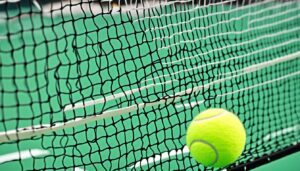






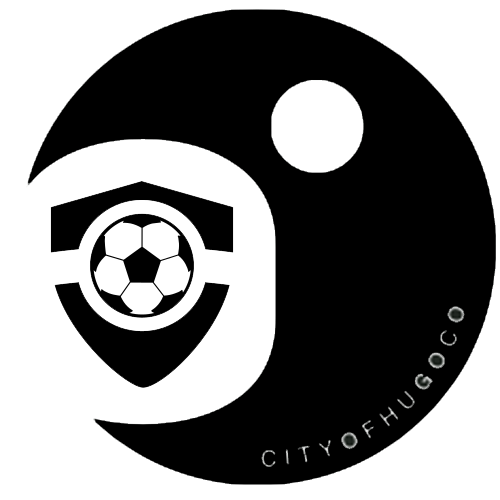
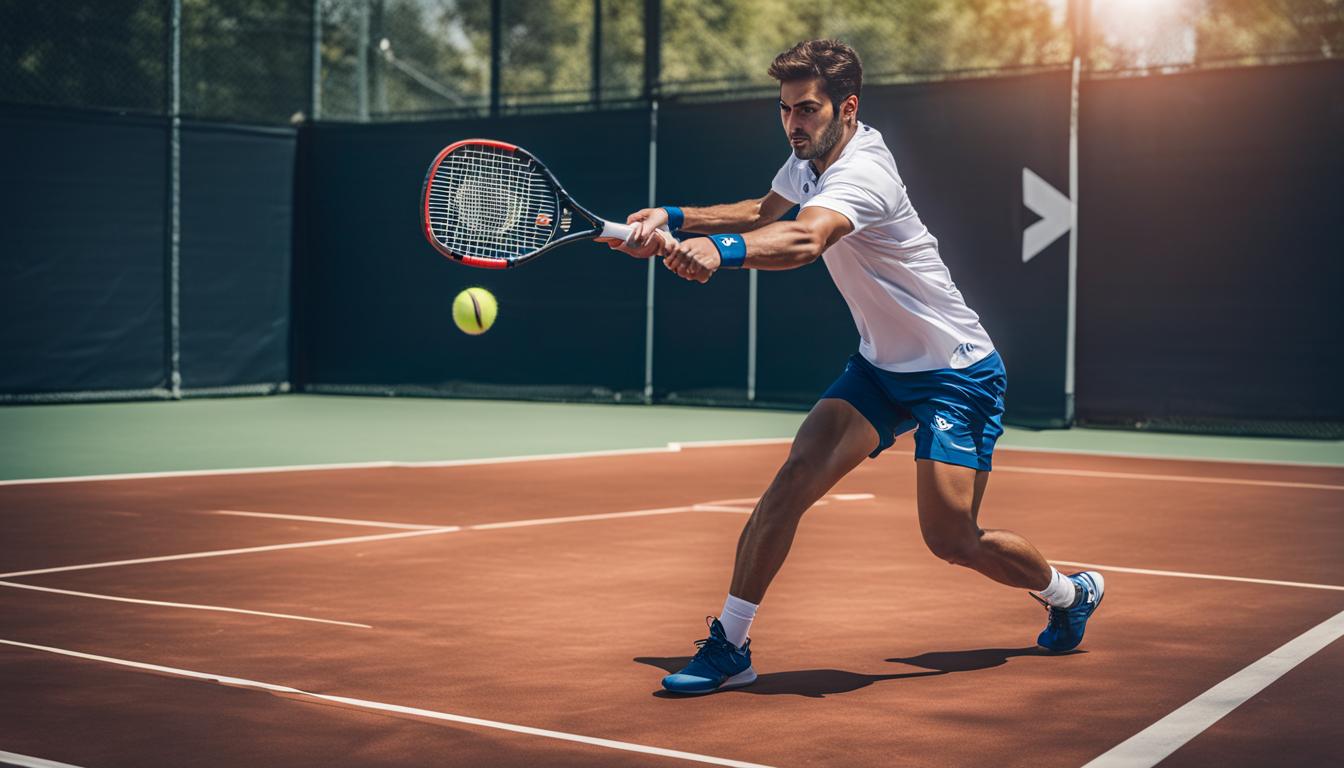


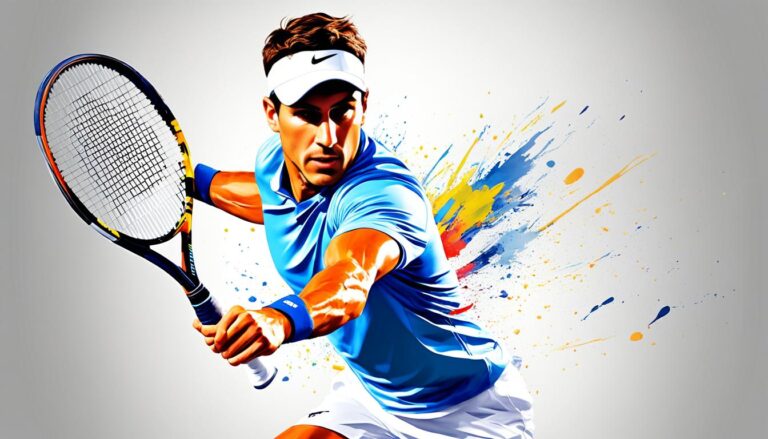








+ There are no comments
Add yours